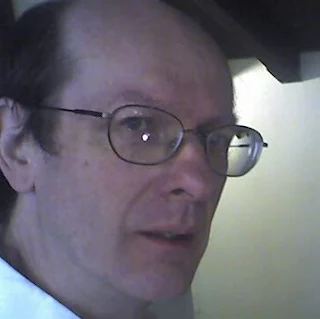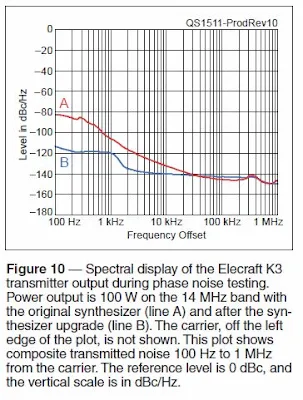
Hi All,
Many of you will know of the low cost Si5351A programmable clock generator which can serve as a VFO with a remarkable range of 2.5kHz to 200MHz. This device is available from the larger industrial component suppliers such as RS for as little as £0.68 +VAT and is offered as a small PCB module with regulator and level converters from many amateur component suppliers for around £7.00. I bought a couple of the Adafruit modules to evaluate as the second conversion oscillator in a DSP IF system I’m developing and once I’d overcome the hurdle of writing the dsPIC33 software to drive the device I decided to test the unit as an HF VFO. My reason for doing this was to assess the phase noise of the si5351A; a quick Google will turn up many blogs and forum listings on this subject with mixed opinions of the suitability of this device for VFO service. With no direct method of measuring phase noise I decided to examine instead the impact of phase noise on receiver performance, after all it is this effect that will determine the suitability of the Si5351A as a VFO. My strategy was simple, I used the receiver section of my 60m SSB transceiver which is based upon the Eden IF (SPRAT 144) and uses one of the club 9MHz SSB filters. The front end mixer is a discrete diode ring made from two trifilar wound FT37-43 toroids and four 1N4148 silicon diodes. Unlike a schottky diode mixer this silicon switching diode version requires more drive to keep conversion loss down. The VFO is a low phase noise 7ppm Si570 running on the high side of the IF at 14MHz, a MMIC output stage delivers +10dBm of drive to the mixer. The Si5351A was compared directly to the Si570 – which is a known “very good” performer.
The test strategy was to measure the receiver Minimum Discernable Signal (MDS) at 5MHz with the Si570 and the Si5351A as the VFO. With no buffer stage to raise the 5dBm output of the Si5351A to match the +10dBm output of the Si570 VFO module, I accepted that this compromise would have some bearing on the results through increased mixer loss.
Results (14MHz oscillator drive, 2.2kHz IF bandwidth)
Si570 +10dBm output, MDS –122dBm (Well below noise from the antenna, perfectly acceptable for 60m!)
Si5351A +5dBm output, MDS –118dBm (Note, mixer drive 5dBm down!)
Some if not most of the 4dB difference in MDS is without doubt attributable to the lower drive power of the Si5351A in my test configuration, this is borne out by the AGC threshold which moved up by 4dB suggesting increased mixer loss. I’m confident that had I been able to match the +10dBm output of the Si570 then it would have been a close match. My conclusion is that for HF at least the Si5351A is a very useful oscillator which is easily applied and can deliver good performance. If you had doubts about using this device at HF I hope that these results encourage you to give it a go!
73 Ron G4GXO











































